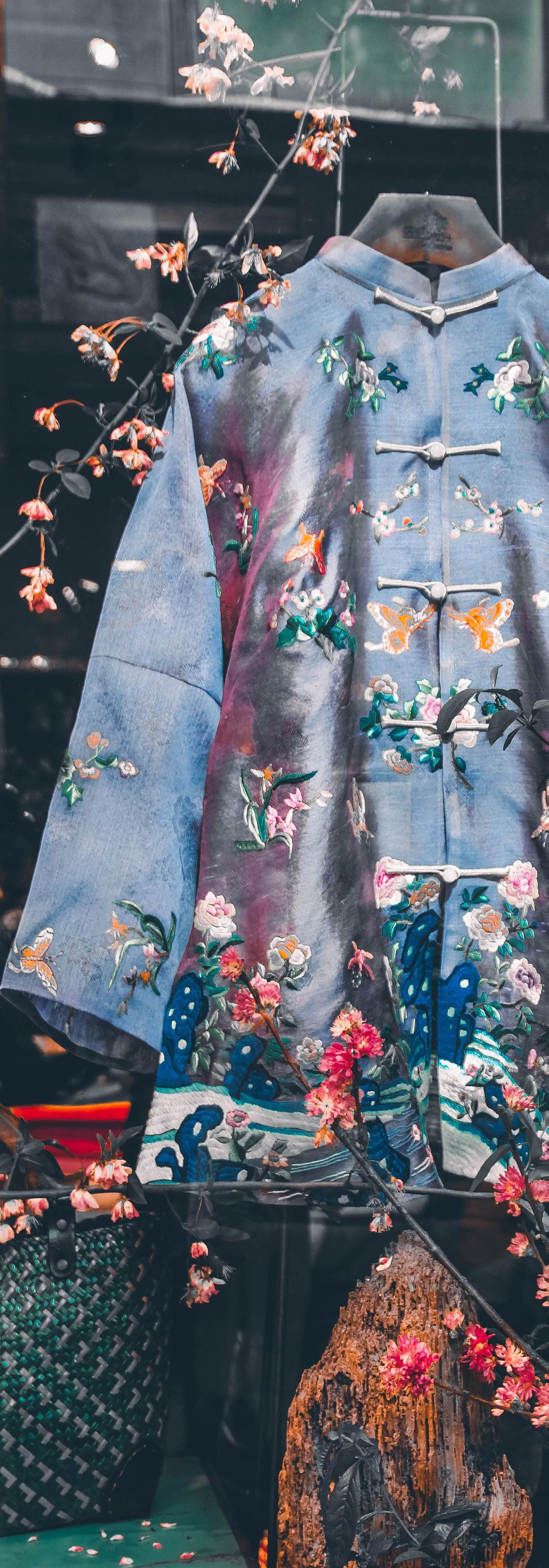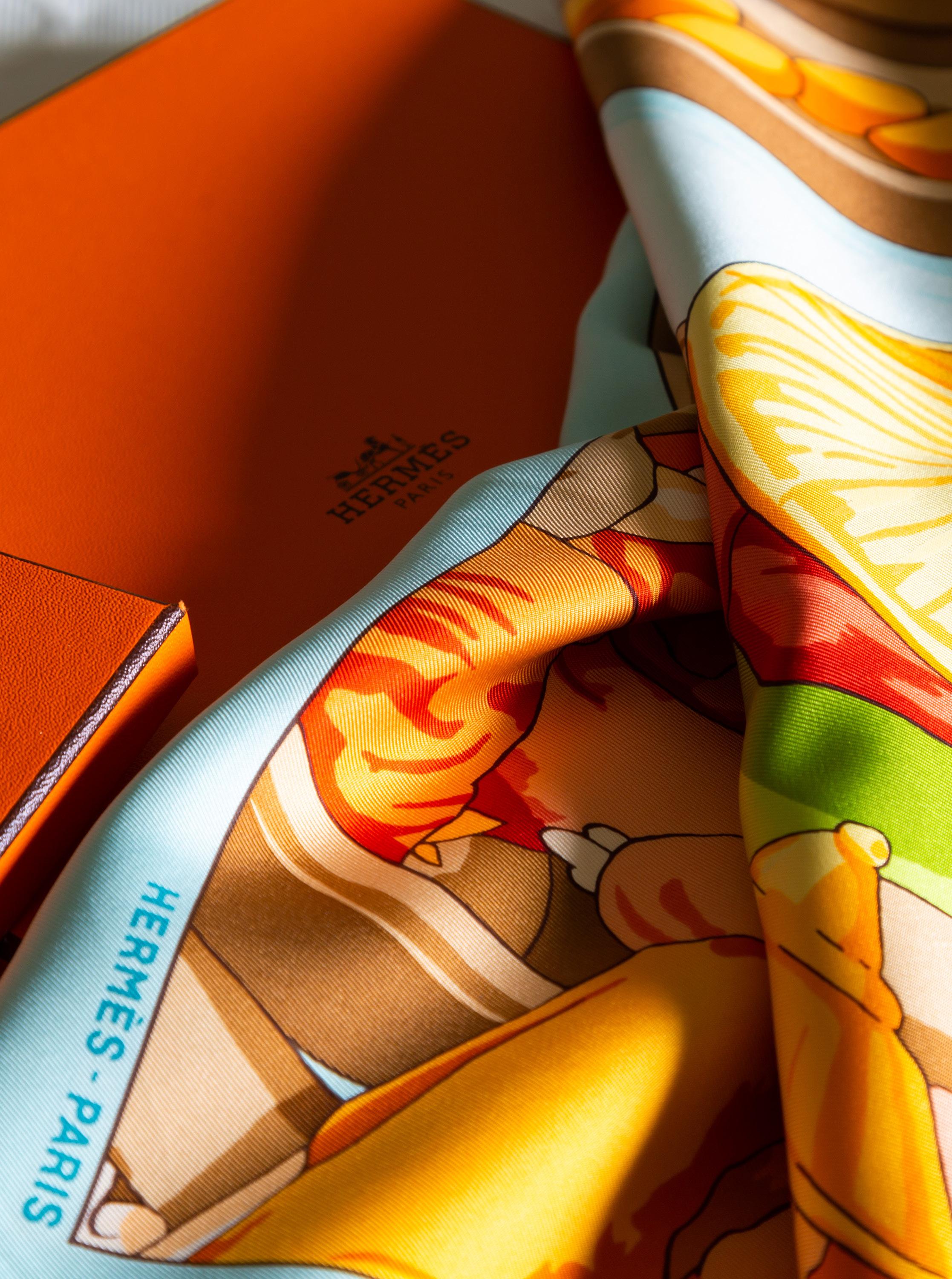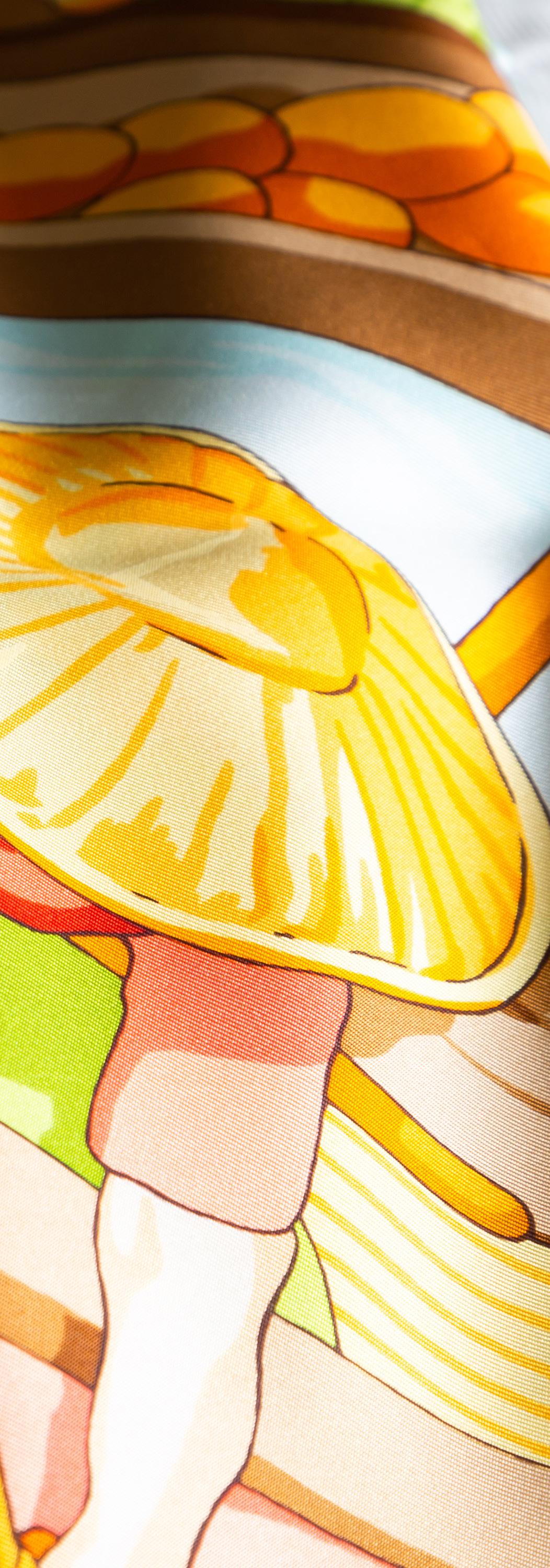
2 minute read
THE SOFT WORLD OF SILK
The shimmering sensuality of silk has been treasured for centuries. In fact, it formed the basis of an extensive trading network that covered almost all of the Eurasian landmass. In some cultures, such as those of China, this precious commodity has an even deeper, cultural importance, and is woven into the fabric of national identity.
By MICHEL CRUZ

Produced by the larvae of the mulberry silkworm, silk is a textile revered for its visual and textural qualities. The very mulberry worm was once worth its weight in gold many times over – a resource jealously guarded and even fought over, for it produced untold wealth for countless centuries. Controlling such a trade meant great power the way oil has done in recent decades, so China did everything it could to maintain its monopoly even after the opening of the Silk Road in 114BCE. Not a single road, but actually a 6.400-kilometre-long network of trade routes that spanned the middle Eurasian landmass from the second century BCE to the mid-1400s. Though many goods were exchanged, silk was the initial spark that would produce an unprecedented flow of people and ideas between East and West over a period of more than 1500 years.
The sumptuous silk textiles crafted in classic China were unlike anything had ever been seen, sensual to the eye, soft to the touch and dazzling with its shimmering array of colours that catch the light. The singular qualities of silk immediately made it the preserve of the wealthy and a symbol of power. This textile of the gods created a chain of links between Europe and China that run across the length of the Middle East and Central Asia, and by the 6th century the Byzantines had succeeded in capturing the prized silkworm eggs and beginning production in northern Greece that would form the basis of their trade monopoly and increased wealth. China lost its control of the market, and production also spread to Japan and Arabia. Today, the process has come full circle, and silk is once again a luxury product made primarily in its homeland, China.

It has symbolic importance in Indian culture
Silk has always been greatly valued in China

Silk continues to be highly sought-after in Asia today



Sensual Luxury
Silk is a sensory product, thanks to its lustre and delicate softness, which make it the king of fabrics. For centuries, Italian and French silk manufacturers created some of the finest pieces of clothing and soft furnishings ever seen, and though the European silk industry largely faded in the 20th century, this tradition is maintained by luxurious names such as Dolce Gabbana, Versace, Gucci and above all Hermès, all of which are famous for their sumptuous dresses, gowns, blouses, scarves, bedding and furnishings. The prices they command are a reflection of the quality of raw material and workmanship, produced by master craftsmen in France, Italy as well as China.
Silk is now firmly entrenched within the cultures and traditions of India, the Middle East and Southeast Asia as well, with saris, wedding dresses and other finery made from the material, and while it can be bought in places as diverse as Harrods and the Istanbul Bazaar, few spots are as representative of it as Singapore. In this melting pot of Chinese, Malay, Indian and Arabic culture, you will find many of the world’s leading silk merchants – complete with tailors that are experts at creating beautiful garments to measure. Complex and therefore expensive to produce, silk will always remain a luxury natural alternative to synthetic mass production.
“We value those products of human ingenuity and skill that are rare, beautiful and inspire the senses. If they have a long tradition, or story, behind them, this adds further cachet. Silk ranks among the finest examples, in decoration as well as fashion.”


Julia Bracco Immobilsarda Sardinia, ITALY
By MICHEL CRUZ
Images courtesy of Corticeira Amorim









